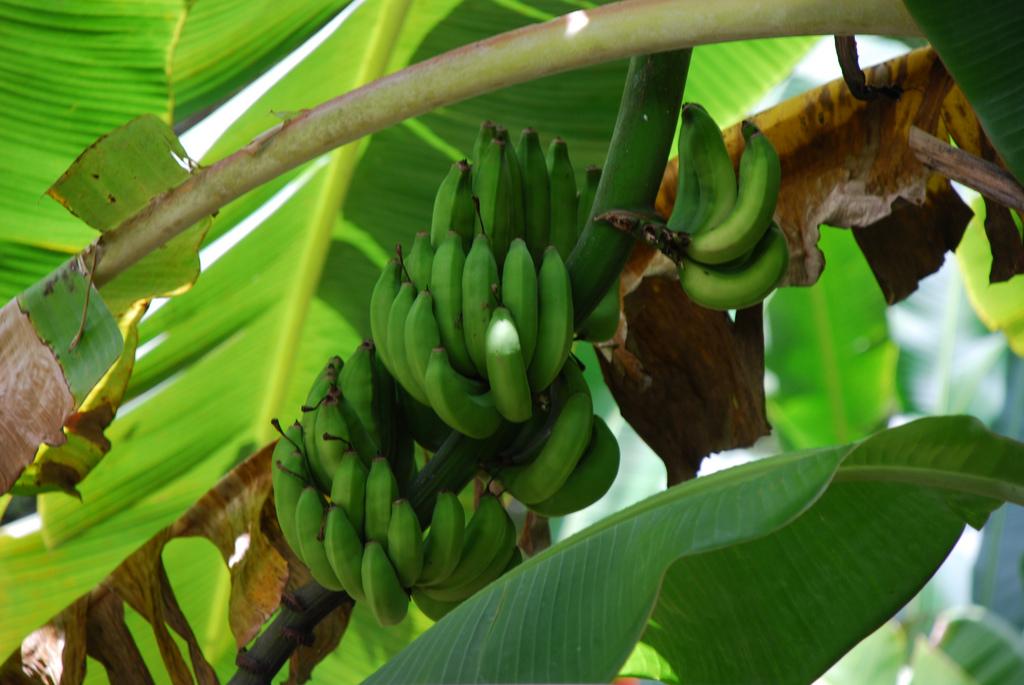Sri Lankan scientists create renewable batteries powered by plantain trees
A group of Sri Lankan scientists are experimenting with batteries made from plantian trees. (Photo by Guitarfool5931 via Flickr.)
Just a few blocks from K.D. Jayasurya’s physics laboratory at Sri Lanka’s Kelaniya University stands a small patch of plantain trees.
The fruit from the trees are a popular food in Sri Lanka, an island nation off the southern coast of India. Most people grow plantain trees in their own yards, especially in rural areas. These are also places with little or no access to electricity.
About a year ago, Jayasurya and his colleagues got an idea: Could they use the plantain trees to make batteries for Sri Lanka’s rural poor?
“If we can produce a cell with freely available raw material, which is biodegradable, then they can use that to light their houses,” he said. “It can add value to their life.”
The idea of using plant material to make battery cells isn’t new. Potato-powered batteries are a common science experiment in American schools. The potato contains an acid that reacts with metal electrodes, causing electrons to flow and generating an electric current.
Several years ago, Israeli scientists found a way to boost the power of potato batteries so that they could be used to run light bulbs and other simple household devices.
But potatoes aren’t cheap in Sri Lanka, so Jayasurya and his team wanted to see if they could use plantain trees as the raw material. Once the fruit is harvested, the rest of the tree becomes waste, which means there’s plenty of material available all over Sri Lanka.
Nandan Jayashantha, a student on Jayasurya’s team, takes a piece of plantain trunk and tears off the outer layers to get to the central-most part. After extracting the core, he boils it and then chops it finely until it turns into a soft mushy material.
Jayashantha then takes some of that material and stuffs it between two rectangular pieces of metal that are held in place by bright yellow electrical tape. The two pieces of metal are the battery’s electrodes.
“We used copper and zinc electrodes,” he said.
The electrodes react with phosphoric acid from the plantain tree, creating an electric current. The electrical output of each battery is tiny — just seven-tenths of a volt — but when Jayashantha places four of these cells in a row and connects them, the output is enough to light up a big LED.
The team still has a long way to go before people in rural communities can use these batteries to light up their homes, but the aim is to create something that rural consumers can make with a small investment in equipment. One advantage of the technology is that a single cell can last a long time.
“Once you make the cell, you can use it for about 10 days (of) continuous lighting,” said Ruwan Wijesundara, another physicist at the University of Kelaniya and a collaborator on the project.
An average tree has enough material for 30 to 40 cells, which means the waste of one plantain tree could someday light a bulb for a whole year.
